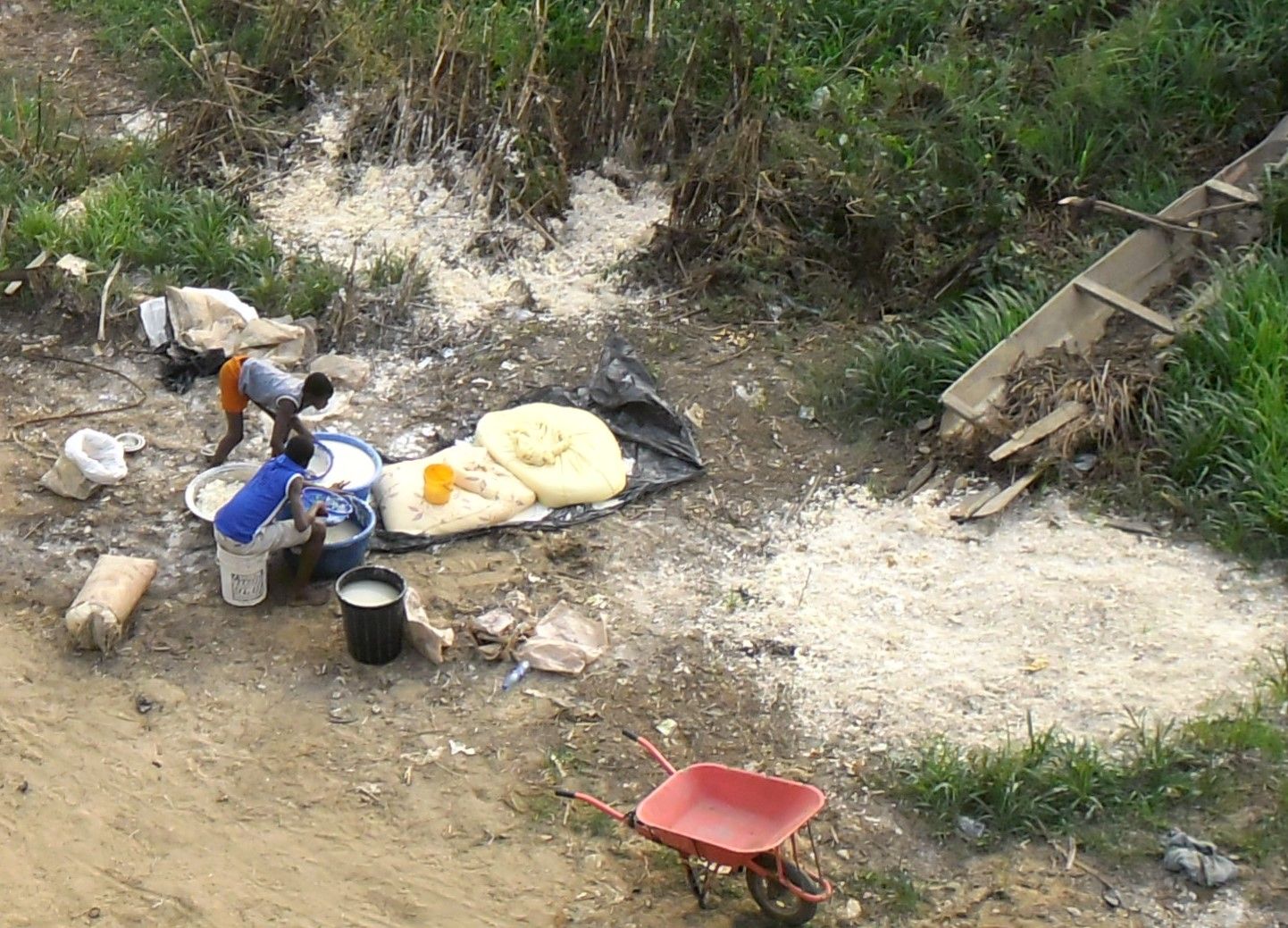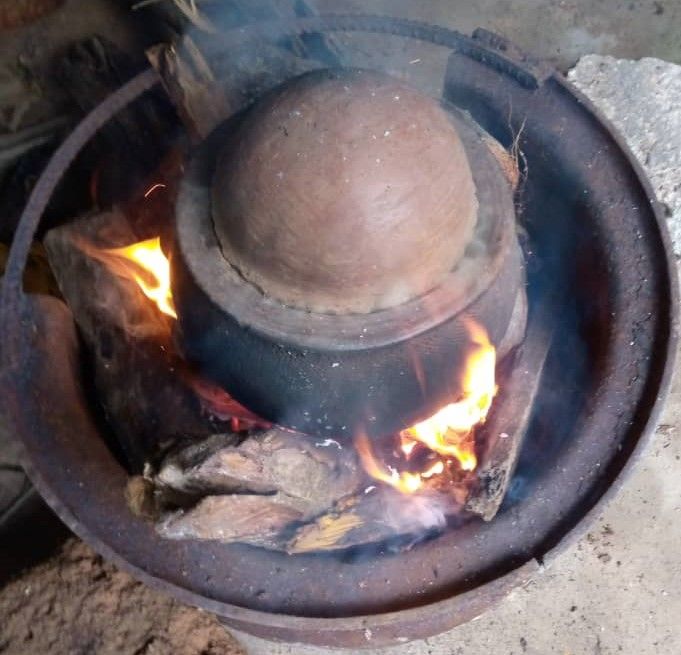Agricultural Residues: Abandoned Wealth Being Recovered by Tropical Research
Publish date: 27th May, 2020
Introduction
Agricultural residues constitute abundant biomass wastes generated during the different stages of farming and processing of crops and livestock in many tropical environments. These residues are major products of the farming process and therefore belong to the farmers. They are treated as waste probably because of poor knowledge of their economic values. Several scientific reports and location-specific indigenous knowledge practices have however shown that what is regarded as waste at a given location may be a source of income at another location. What makes the difference is information, knowledge and innovative approaches and practices residing in such farmers or developed by researchers in these places. Agricultural residues are therefore hidden wealth wasting away that need to be exploited for added income at most tropical farming and food processing environments.
Types and quantification of agricultural residues
Agricultural residues are defined as waste materials derived from the growing and processing of farm crops such as fruits, vegetables, grains, tubers and palms, and production and processing of meat, poultry, and dairy products. Biomass waste resources encompass all forms of organic waste materials, including wood wastes, animal wastes, agricultural residues, municipal wastes, wastes from aquatic plants, and algae. Recent estimates show that more than 990 million tons of agricultural biomass residues are generated globally. This is expected to continue to increase globally as developing tropical countries continue to intensify their agricultural production systems. The major agricultural biomass residues from farming activities in Nigeria shown in table 1 were estimated at 94,400,000 million tons in 2017.
| Resource | Crop Production(Million metric tons) | Crop Production(Million metric tons) |
|---|---|---|
| Cassava | 45,000,000 | 29,000,000 |
| Yam | 33,500,000 | 22,000,000 |
| Millet | 8,000,000 | 11,000,000 |
| Maize | 7,500,000 | 3,000,000 |
| Rice | 4,600,000 | 1,800,000 |
| Potato | 1,000,000 | 600,000 |
| Cowpea | 3,000,000 | 4,050,000 |
| Groundnut | 2,800,000 | 6,000,000 |
| Oil palm | 1,000,000 | 400,000 |
| Sugar cane | 800,000 | 300,000 |
| Sweet potato | 3,000,000 | 2,000,000 |
| Cocoyam | 2, 00,000 | 1,500,000 |
| Coffee | 200,000 | 400,000 |
| Cashew | 180,000 | 300,000 |
| Plantain | 250,000 | 9,450,000 |
| Sorghum | 11,000,000 | 2,500,000 |
| Source: Akorede et al., 2017 |
Cassava, yam, millet, plantain, and groundnut occupied the top five positions. It has also been estimated that Nigerian livestock made up of ruminants, horses, pigs, and poultry all together produce about 0.78 million tons of animal waste daily. Agricultural biomass residue yield of the country is high because it is estimated that about 94 percent of households are involved in crop farming, while another 68 percent are engaged in livestock keeping.
Traditional uses and problem created by agricultural residues
Traditionally, agricultural wastes have been used as fertilizer sources for soil enrichment, animal feeds, bio-fuel, and building material among many other location-specific uses. Many rural farmers in tropical countries like Nigeria are however yet to fully harness the potentials of these materials, therefore they constitute environmental pollution problems at several production locations. For example, a major constraint arising from intensive livestock production in Nigeria has been the issue of complaints from the general public about bad odor from animal dung and other wastes. Many livestock farming sites in the country are characterized by obnoxious odor and unsightly layouts emanating from poorly handled dung or slurry which has become serious threats to human and animal health. Thus, strict regulations are increasingly being crafted and enforced by governments, including closures of such farms due to public health concerns.
Tropical Research interventions
Several tropical research studies have reported simple and innovative techniques for enhancing the value of locally available agricultural biomass residues for cottage industries and rural farms applications. These techniques include the processing of biomass materials into cost-effective animal feed raw materials and additives; bio-fuel productions in the form of biogas, briquettes, alcohol, and diesel; production of food and feed grade ash minerals, biochar, and activated charcoal, which are used in attenuation of polluted agricultural soils; production of organic fertilizer through composting; and use as a substrate for the production of mushrooms.
The transformation of agricultural residues into animal feedstuff is particularly important in Africa and Nigeria where livestock and fish production has grown steadily by 60 percent in recent times and is predicted to grow by another 250 percent by the year 2050. In 2011 alone, Nigeria produced and utilized 10 million tons of animal feeds, while projected estimates for 2050 stand at 25 million tons per year. This has also been accompanied by increasing demand and prices of conventional feed raw materials such as maize, soybean, and groundnut, which also serve as human food and food industry raw materials. The increased use of these important grains as animal feed raw materials in a region that has never produced them in enough quantity to meet the demand for human consumption raises moral concerns. There is, therefore, the need to research innovative methods of sustaining the growing livestock industry without jeopardizing regional and national food security.
Agricultural residues are being researched extensively as cheap alternative non-ruminant feed raw materials in many tropical countries because of the increasing costs of commercial feeds above the reach of the ordinary farmer. Attempts at solving this problem have centered on the search for alternative, cheap and locally available substitutes to the costly conventional feedstuffs and using these to conduct feeding trials aimed at generating useful information on their nutritional values in non-ruminant animal production. At the same time, increasing human demands for several food crops have led to a considerable increase in the availability of agro-industrial by-products such as molasses, brewer's dried grains, palm oil cake, and sludge, winery mash and cereal brans among others. A large number of agro-industrial by-products, forest wastes, aquatic herbages, and animal organic wastes are being identified, processed, and experimented as feed for farm animals and have been designated unconventional or non-conventional feedstuffs. Examples include discarded biscuits, bakery waste, rice bran, blood meal, corn cob, maize bran, cassava peel, and seviate, cassava chips, and copra cake. Others are cocoa pod husk, coffee pulp, oil palm fruit bunch and slurry, groundnut skin, millet marsh, sorghum marsh, brewers spent grain, bone ash, molasses, sugar beet pulp, citrus pulp, yeast, wheat bran, cocoa meal and distillers soluble among many others.

Most of these products are however low in major nutrients needed to enhance the production performances of intensively farmed animals. Due to their high fiber content and lower nutritional quality, there is usually the need for further improvement through research and further processing, while their level of inclusion in the diets of animals usually ranges below 20% in most cases and below 30 % at best. Such high fiber plant biomass materials and also animal wastes can be burnt either in the presence of oxygen (complete combustion) to produce plant ash or burnt in the absence of oxygen (pyrolysis) to produce activated charcoal, which are finding increasing use as antidotes, absorbents, and additives in animal production. Indeed, low-cost waste materials such as palm kernel shell and fruit bunch, coconut shell and husk, several crop stalks and chaffs, animal bones and excreta, organic wastes, and sludge are known to be good precursors for producing activated charcoal for use as adsorbents because of their well-developed pore structure.

Constraints to research adoption and solutions
Non-conventional feed resources are presently underutilized in the livestock industry and there are several reasons for this, the major ones being variability in their nutrient composition, presence of contaminants, high fiber content, presence of anti-nutritional factors and poor knowledge transfer to end-users. A search of studies dealing with the use of unconventional feedstuff in animal production reveals abundant literature produced by scientists working in different tropical regions on the use and processing techniques of various feedstuffs. This highlights the rich knowledge among these scientists about the importance of non-conventional feedstuffs in the sustenance of tropical livestock production.
There is however a near lack of application of this information in the industry to the benefit of the end-users or producers. A good number of the research reports have remained mostly inaccessible to producers probably because of the reporting style, which usually is too technical and the medium of publication, which has narrow distribution. However, knowledge generated through research or from others' experiences must be communicated to farmers in a practical, helpful, and usable manner, through proven knowledge transfer methods. For this to happen, the gaps among research, practice, and policy must be bridged through the activities of actors that have the skills to intervene and link farmers with new technologies and practices.
Therefore, in the next series of blogs, attempts will be made to communicate in simple language, the essential findings from recent tropical studies designed to enhance the utilization of agricultural residues in the feeding of farm animals for the benefit of the end-users. The major objectives are to enhance the access of industry end-users to such information for improved production and to enhance the impact of science on agricultural industries and policy-making in the tropics.
Bibliographic References
Adeola, O. and Olukosi, O.A. (2009). Opportunities and challenges in the use of Alternative feedstuffs in poultry production. Proceedings of the 3rd Nigerian International Poultry Summit: 22-26 February 209. Abeokuta, Ogun State, Nigeria. Pp: 45-54.
Akorode, M.F., Ibrahim, O., Amuda, S.A., Otuoze, A.O. and Olufeagba, B. J. (2017). Current status and outlook of renewable energy development in Nigeria. Nigeria Journal of Technology, 36(6): 196-212.
Chikaire, J.U., Okoli, L.C., Nnadi, F.N. and Okoli, I.C. (2017). Multi-stakeholder analysis/platforms: The nucleus of Nipoferd success in knowledge transfer. In: Okoli, I. C. and Udedibie, A.B.I. (Eds.). The science and technology of cassava utilization in poultry feeding. Proceedings of a NIPOFERD Workshop on Knowledge Transfer towards Cost-Effective Poultry Feeds Production from Processed Cassava Products to Improve the Productivity of Small-Scale Farmers in Nigeria, June 27 – July 1, 2016, Asaba, Nigeria. Pp: 11 – 21.
Ifeduba, A.V. (2018). Computer models on the performance of broilers and layers fed alternative feedstuff. MSc Thesis, Federal University of Technology Owerri, Nigeria.
Okey S.N. (2019). Assessment of the value of agricultural residues-derived activated charcoal in poultry production. Ph.D. research proposal, College of Veterinary Medicine, Michael Okpara University of Agriculture, Umudike, Nigeria.
Okike, I., Anandan, S., Lawrence, K., Claude, F., Joseph, A., Ranajit, B., Peter, K., Alan, D., Tunrayo, A. and Micheal, B. (2015). Technical innovations for small-scale producers and households to process wet cassava peels into high-quality animal feed ingredients and aflasafeTM substrate. Food Chain, 5:1-2.
